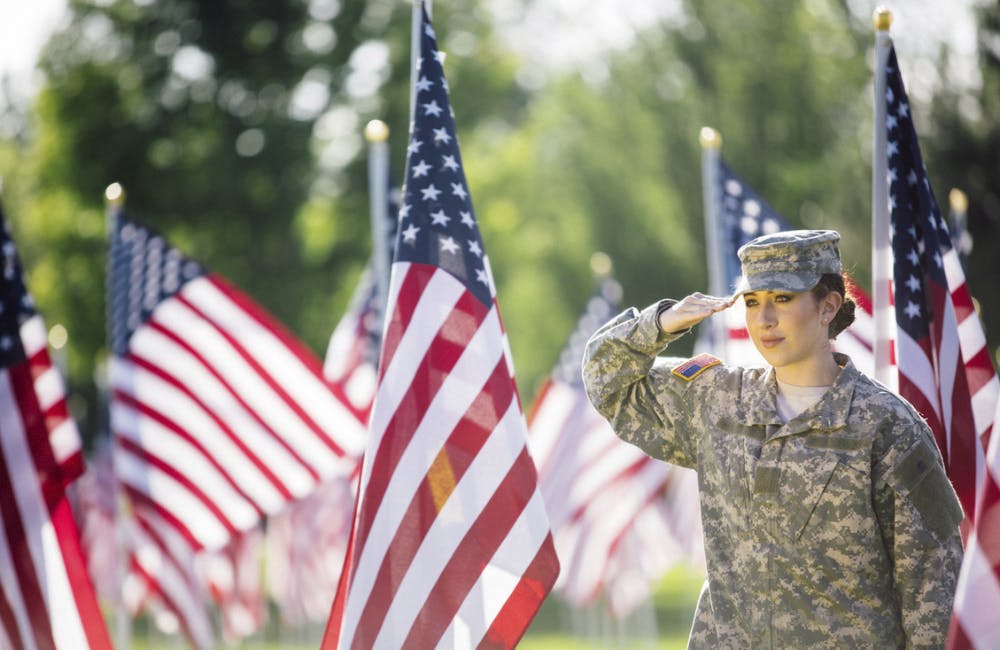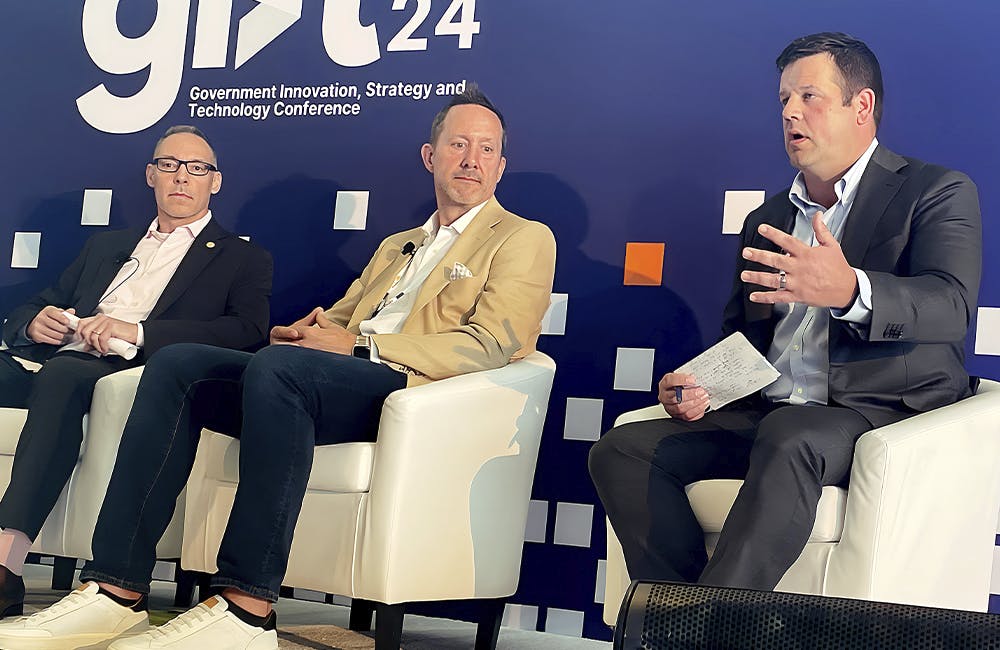VA is Expanding Opportunities, Services for Women Veterans
New tech tools and knowledge-sharing initiatives are supporting women veterans.

Leaders across the Department of Veterans Affairs are mitigating barriers for women veterans and increasing access to benefits and services through new technology solutions.
Within VA’s Center for Women Veterans, division Director Lourdes Tiglao highlighted a new campaign called I Am Not Invisible (IANI), which aims to spotlight diversity across the veteran community. IANI is increasing awareness and dialogue about women veterans as well as highlighting their skills and expertise.
“The importance of that is making sure that veterans, whether they’re male or female, across different demographics, they see that women veterans served. Many times, you’ve probably heard that when someone says ‘veteran,’ the first thing that comes to mind is a male veteran,” Tiglao said during ACT-IAC’s VA Initiatives for Women Veterans webinar earlier this month. “We don’t always hold space to make sure that we own our space as women veterans.”
IANI also aims to make sure that women are comfortable in their service and to create a community of support as they transition out of the military. To foster these communities, the Center for Women Veterans also hosts networking opportunities to connect women veterans and ensure their voices are heard.
At the Veterans Benefits Administration (VBA), leaders are conducting outreach to women veterans to build new spaces to share experiences and create new learning opportunities, said Cheryl Rawls, executive director of outreach, transition and economic development at VBA.
“We’ve been conducting roundtables across various demographics … to listen to the issues and concerns and some of the barriers they find for access with Native American women veterans, with Caribbean and international women veterans,” Tiglao said. “We will try to reach women veterans wherever they are… to make sure that no one feels that they are any less deserving of their service because they are not seen.”
As VA evolves to drive equity, the department is honing in on education. Many times, women veterans are not aware of their full range of benefits and services, Tiglao said. VA is accelerating awareness campaigns to ensure all veterans receive equal opportunities after service.
“We’re trying to connect those women veterans together to feel empowered, to find support and to be mentored,” Tiglao said. “The first part of providing positive impact is acknowledging their existence, providing a platform for them to speak their mind and helping them to feel empowered to have a voice. Their opinions and voices are valued at VA, and we will do our best to address those.”
As service members transition out of the military, Rawls is working to boost veteran participation, so they better understand the range offerings at VA. Rawls’ team recently launched a women’s health training module that provides a safe environment for women to talk with other women about their health and get the help they need.
“As we are continuing to evolve, we are listening to you,” Rawls said. “We are continuing to put out programs and projects … and we’re at a pace now where we are sprinting.”
VA is also launching new technology tools like call centers, new reproductive health capabilities and telehealth to expand access services and benefits. Luwanda Jones, deputy CIO at VA’s Office of Strategic Sourcing, said that IT capabilities are enabling better care and removing barriers.
“What the pandemic allowed us to do was to expand our telehealth capabilities. We’re looking at approximately 11 million veterans that access telehealth between the time that the pandemic started until now. We’re looking at how we can use artificial intelligence to make sure we can provide the capabilities that we need to provide for our women,” Jones said.
Looking ahead, the Center for Women Veterans is working with the Veterans Experience Office to develop new tools that are tailored for women veterans. Tiglao said that many of VA’s existing tools are generic across veterans and dilute the needs of minority communities.
“This is all going to be a part of an ongoing effort to meet women veterans where they’re at in the mode they’re comfortable with. It’s not to force us to come to us. It’s just one way to show that we’re listening to our women veterans across various demographics, and that we’re lowering the barriers for them to reach us,” Tiglao said.
This is a carousel with manually rotating slides. Use Next and Previous buttons to navigate or jump to a slide with the slide dots
-

How TMF is Helping Agencies Accelerate Tech Modernization
The program launched a new AI pilot to expedite TMF applications as agency leaders urge more to consider applying for funds.
4m read -

Defense Board to Pitch Solutions for Closing Tech Talent Gaps
Defense Innovation Board members cite need to modernize people management the same way government modernizes technology.
4m read -

How Agencies are Upskilling the Workforce in AI
Federal officials are putting in place new training and education methods to ensure its overall workforce understands the technology.
3m read -

A Prepared Workforce is Key to Cyber Resiliency
Strong training strategies and emphasizing cyber hygiene basics enhance security practices at federal agencies.
2m read








